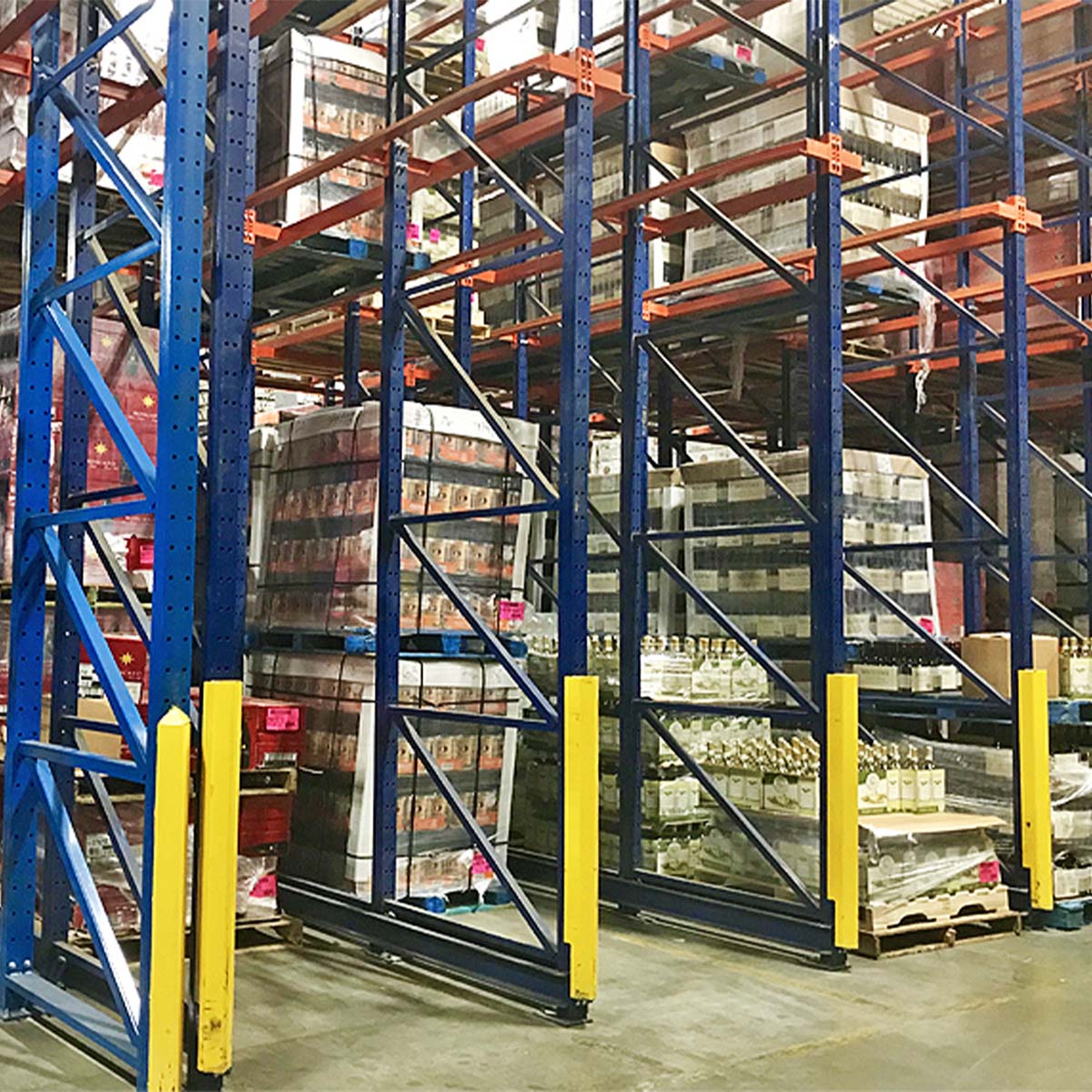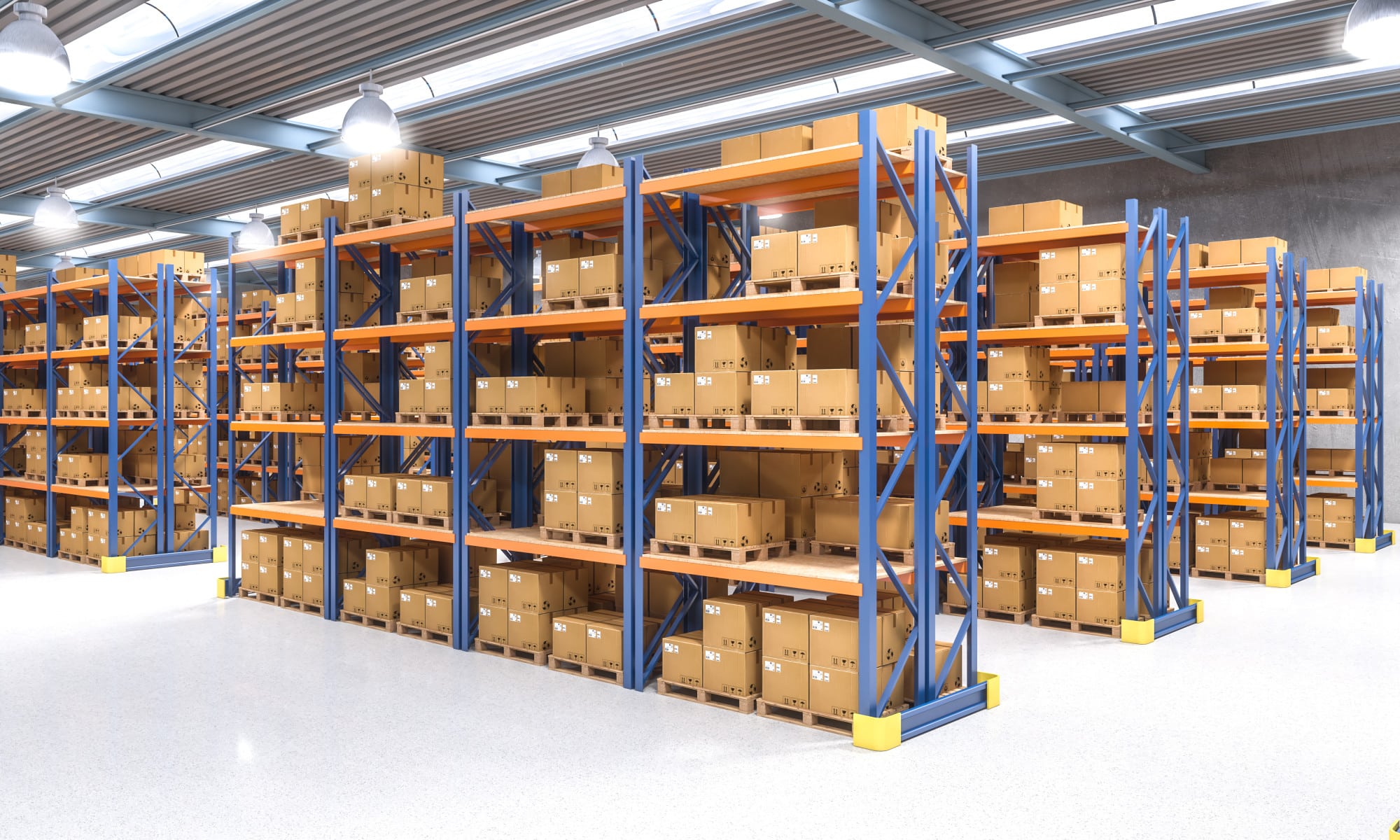Heavy Duty Pallet Racking: Enhanced Warehouse Efficiency
Warehouses are filled with forklifts zipping back and forth and workers maneuvering through narrow aisles as they pick and pack orders. The constant movement and activity can lead to inefficiencies, bottlenecks, and even accidents. Fortunately, there is a solution that can help streamline warehouse operations, enhance picking speed, and improve productivity: heavy-duty push back pallet racks.
The Problem with Inefficient Warehousing
Warehouses with limited space and unorganized storage often struggle with low productivity and high labor costs. Inefficient use of vertical space can result in wasted floor space and limited storage capacity. Traditional pallet racking systems can also be difficult to access, leading to time-consuming picking and retrieval processes.
Introducing Heavy-Duty Push Back Pallet Rack Systems: A Revolutionary Solution
Heavy-duty push back pallet rack systems are designed to address these challenges by providing a safe and efficient storage solution that maximizes space utilization and improves picking speeds. These systems allow for the storage of multiple pallets deep, without the need for aisles between each row. Pallets are loaded onto the system from one side and are then pushed back by the next pallet loaded. When an item is needed, the front pallet is removed, allowing the pallets behind to roll forward to the picking face. This system eliminates the need for forklifts to enter the storage aisles, reducing congestion and increasing picking efficiency.

Benefits of Implementing a Heavy-Duty Push Back Pallet Rack System
Implementing a heavy-duty push back pallet rack system can provide a range of benefits for warehouses, including: – Increased Storage Capacity: By eliminating aisles between pallet rows, push back rack systems can significantly increase storage capacity, allowing warehouses to store more inventory in a smaller footprint. – Enhanced Picking Efficiency: The LIFO (last-in, first-out) design of push back racks allows for quick and easy access to pallets, reducing picking times and improving overall productivity. – Reduced Labor Costs: By streamlining the picking process and eliminating the need for forklifts to navigate aisles, push back racks can reduce labor costs associated with order fulfillment. – Improved Safety: The elimination of forklifts in the storage aisles reduces the risk of accidents and injuries, creating a safer work environment for warehouse employees.

Types and Applications of Heavy-Duty Push Back Pallet Rack Systems
Push back rack systems are available in various configurations and can be customized to meet the specific needs of each warehouse. Some common types of push back racks include: – Standard Push Back Racks: These racks are designed for storing standard pallets and are available in a range of depths and capacities. – Gravity Flow Push Back Racks: These racks utilize gravity to move pallets from the loading side to the picking side, further enhancing picking efficiency. – Pallet Flow Push Back Racks: These racks combine the features of push back racks and pallet flow racks, providing both high-density storage and efficient picking. Push back rack systems are suitable for a variety of industries, including manufacturing, distribution, and retail. They can be used to store a wide range of products, including food and beverages, electronics, pharmaceuticals, and automotive parts.

History and Evolution of Heavy-Duty Push Back Pallet Rack Systems
The concept of push back pallet racks was first developed in the early 20th century. These early systems were simple in design and were typically made of wood or metal. Over the years, push back racks have evolved to become more sophisticated and efficient. The introduction of high-strength steel and advanced manufacturing techniques has led to the development of heavy-duty push back racks that can withstand the demands of modern warehousing operations.
Hidden Secrets of Heavy-Duty Push Back Pallet Rack Systems
There are several hidden secrets to the efficiency of heavy-duty push back pallet rack systems: – Nested Cart Design: The carts used in push back racks are designed to nest within each other, which minimizes the space required when pallets are not loaded onto the system. – Low Rolling Resistance: The wheels or rollers used on the carts are designed to have a low rolling resistance, which allows pallets to move smoothly and easily when pushed. – Anti-Jamming Mechanisms: These mechanisms prevent pallets from jamming or becoming stuck, ensuring smooth operation of the system.

Recommendations for Implementing a Heavy-Duty Push Back Pallet Rack System
To ensure the successful implementation of a heavy-duty push back pallet rack system, there are a few key recommendations to follow: – Conduct a Thorough Needs Assessment: Determine the specific storage requirements, including the type of products to be stored, the desired storage capacity, and the required picking speeds. – Choose a Reputable Manufacturer: Opt for a manufacturer with a proven track record of producing high-quality push back rack systems. – Hire an Experienced Installer: Proper installation is crucial for ensuring the safety and efficiency of the system. Partner with an experienced installer who can ensure that the racks are installed according to industry standards.

Maximizing Space Utilization with Heavy-Duty Push Back Pallet Racks
Heavy-duty push back pallet racks offer a remarkable solution for warehouses that seek to maximize space utilization. By eliminating aisles between rows, these systems enable warehouses to store more inventory in a smaller footprint. This is especially beneficial for facilities with limited space or high-value inventory. Push back racks allow for the efficient storage of various products, from bulky items to smaller packages. Their versatile design accommodates a wide range of storage requirements, making them an ideal solution for warehouses across diverse industries.
Tips for Optimizing Heavy-Duty Push Back Pallet Rack Systems
To fully optimize the performance of heavy-duty push back pallet rack systems, consider these tips: – Utilize Vertical Space: Make the most of the available vertical space by storing pallets in multiple levels. This increases storage capacity without compromising accessibility. – Implement a FIFO (First-In, First-Out) Inventory System: Prioritize the retrieval of older inventory to prevent product obsolescence and maintain inventory accuracy. – Train Operators Properly: Ensure that forklift operators are adequately trained on the proper use and safety protocols of the push back rack system. This minimizes the risk of accidents and damage to both products and equipment.

Innovative Design Features of Heavy-Duty Push Back Pallet Racks
Heavy-duty push back pallet racks incorporate innovative design features that enhance their functionality and durability: – Rugged Construction: These racks are built with heavy-duty steel to withstand the weight and impact of heavy pallets. The robust construction ensures the system’s longevity and reliability. – Durable Coatings: The racks are often coated with a durable finish that protects against corrosion and wear, ensuring a long lifespan even in demanding warehouse environments. – Adjustable Pallet Stops: The system allows for the adjustment of pallet stops to accommodate different pallet sizes and weights, ensuring stability and preventing pallets from shifting during storage and retrieval.
Fun Facts about Heavy-Duty Push Back Pallet Rack Systems
Here are some interesting fun facts about heavy-duty push back pallet rack systems: – Did you know that push back racks can store up to six pallets deep, significantly increasing storage capacity compared to traditional pallet racking systems? – These systems can handle loads of up to 1,000 pounds per pallet, making them suitable for storing a wide range of heavy items. – Push back racks are designed to withstand earthquakes and other seismic events, ensuring the safety of stored products and warehouse personnel.

How to Maintain Heavy-Duty Push Back Pallet Rack Systems
To ensure the optimal performance and longevity of heavy-duty push back pallet rack systems, regular maintenance is essential: – Periodic Inspections: Conduct regular inspections to check for any signs of damage, corrosion, or wear. Promptly address any issues to prevent potential hazards or downtime. – Lubrication: Lubricate the wheels or rollers of the carts to minimize rolling resistance and ensure smooth operation. – Safety Checks: Inspect safety features such as anti-jamming mechanisms and pallet stops to ensure they are functioning correctly.
What if Heavy-Duty Push Back Pallet Rack Systems Fail?
In the unlikely event of a heavy-duty push back pallet rack system failure, immediate action is crucial: – Evacuate the Area: If possible, evacuate the area where the failure occurred to ensure the safety of personnel. – Assess the Damage: Carefully assess the extent of the damage and identify the cause of the failure. – Contact the Manufacturer: Reach out to the manufacturer of the rack system for guidance on repair or replacement procedures. – Implement Safety Measures: Implement appropriate safety measures to prevent further damage or accidents, such as cordoning off the affected area and restricting access.

Listicle: Advantages of Heavy-Duty Push Back Pallet Rack Systems
Here’s a listicle summarizing the key advantages of heavy-duty push back pallet rack systems: – Increased storage capacity – Enhanced picking efficiency – Reduced labor costs – Improved safety – Versatile configuration options – Space optimization – Durability and reliability – Ease of maintenance – Suitable for various industries
Question and Answer
Q: What is the typical lifespan of a heavy-duty push back pallet rack system?A: With proper maintenance and care, heavy-duty push back pallet rack systems can have a lifespan of over 20 years.
Q: Can push back racks be customized?A: Yes, push back racks can be